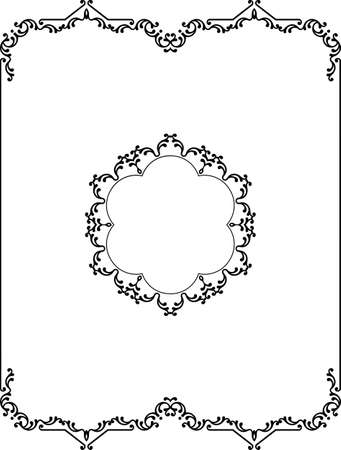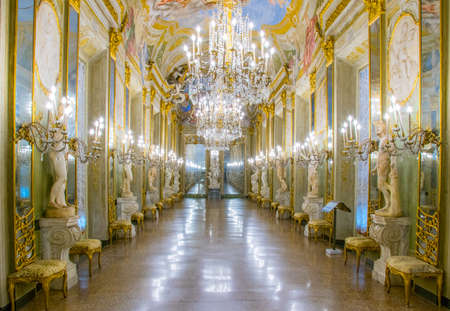Introduction to Victorian Interior Lighting
The Victorian era, spanning the reign of Queen Victoria from 1837 to 1901, witnessed a remarkable transformation in domestic lighting practices across Britain. This period marked a pivotal point where technological innovation and social aspiration converged, particularly among the burgeoning middle and established upper classes. Before the advent of widespread electricity, homes relied on an array of lighting methods—ranging from tallow candles and oil lamps to the more refined gaslights that began illuminating urban residences in the mid-19th century. The shift towards brighter, more controllable sources of light was as much about practicality as it was about displaying ones social standing. As families sought to create inviting parlours and grand dining rooms, chandeliers emerged not only as functional fixtures but also as dazzling focal points that reflected both cultural values and personal aspirations. In this context, chandeliers were not merely sources of illumination; they became potent symbols of status, taste, and modernity within Victorian interior design.
Cultural Significance of Chandeliers
During the Victorian era, chandeliers were more than just elaborate lighting fixtures; they evolved into essential cultural symbols within British homes. Their presence in drawing rooms, dining spaces, and grand entrance halls spoke volumes about the homeowners social standing and aspirations. In a society deeply rooted in traditions of hospitality and ceremony, chandeliers naturally became focal points that brought people together under their radiant glow.
Chandeliers as Focal Points of Social Rituals
Victorian households were renowned for their dedication to entertaining guests. The act of inviting friends and acquaintances for tea or dinner was as much about forging connections as it was about demonstrating ones taste and refinement. Chandeliers played a pivotal role in these gatherings by providing not only light but also a sense of occasion. Their shimmering presence above the dining table or in the parlour accentuated the rituals of polite conversation, storytelling, and formal dining that defined British domestic life.
The Symbolic Connection to Hospitality and Progress
Beyond mere decoration, chandeliers embodied ideals that were central to Victorian values—hospitality, progress, and innovation. As Britain led the Industrial Revolution, advancements in glassmaking and metalwork allowed for increasingly intricate designs. Installing a new chandelier signalled not just wealth but also an embrace of modernity and technological progress. The ability to illuminate a room with dazzling clarity was itself a mark of a forward-thinking household.
Chandeliers in Everyday British Life: A Comparison
| Aspect | Role of Chandeliers | Victorian Social Value |
|---|---|---|
| Hospitality | Set the mood for gatherings, enhanced guest experiences | Warmth, openness, generosity |
| Progress | Showcased latest design trends & lighting technology | Innovation, modernity, status-consciousness |
| Social Rituals | Became centrepieces during tea parties & dinners | Politeness, etiquette, communal identity |
The enduring appeal of chandeliers in Victorian interiors lay in their unique ability to blend practical illumination with symbolic meaning. Their placement and design choices reflected not only aesthetic preferences but also deeper cultural narratives—ones centred on how British families lived, entertained, and sought to project their place within a rapidly changing world.

3. Craftsmanship and Materials
The Victorian era is renowned for its celebration of craftsmanship, and nowhere is this more evident than in the construction of chandeliers that adorned the homes of Britain’s burgeoning middle and upper classes. These lighting centrepieces were not merely functional; they were intricate works of art, shaped by highly skilled artisans whose techniques had been honed over generations. British chandelier makers prided themselves on their meticulous attention to detail, often collaborating with local glassmakers and metalworkers to produce pieces that balanced elegance with durability.
Materials played a central role in defining the character and prestige of Victorian chandeliers. Cut glass was especially favoured, with its ability to refract light and create dazzling patterns across ornate parlours and grand dining rooms. This was paired frequently with polished brass frames—valued both for their strength and warm golden glow—or, for those seeking even greater opulence, hand-cut crystal imported from continental Europe or crafted by British specialists. Each material was chosen not just for beauty but for its ability to demonstrate the household’s appreciation for quality and innovation.
Technological advances during the 19th century further elevated British chandelier-making. The advent of gas lighting required new adaptations, prompting inventors and craftsmen to design fixtures that could safely accommodate gas jets while retaining decorative appeal. Later, as electricity began to make inroads into domestic life, chandeliers once again evolved—sometimes combining gaslight and electric bulbs in a single fitting, a testament to the resourcefulness and adaptability of British workmanship. Ultimately, the Victorian chandelier became a symbol not only of taste and social status but also of national pride in artisanal skill and technological progress.
4. Symbolism of Wealth and Status
During the Victorian era, chandeliers were far more than mere sources of illumination; they functioned as potent symbols of wealth and social standing. The presence of an ornate chandelier in the home was an unmistakable statement to visitors, signalling the household’s position within the social hierarchy. The Victorians placed great emphasis on appearances and public perception, and the grandeur of a chandelier reflected not only personal taste but also economic power. Chandeliers constructed from crystal, gilded bronze, or fine glass were prized possessions, typically reserved for the grand halls and drawing rooms of prosperous families. These lavish fixtures became key features during gatherings and formal events, where guests would inevitably take note of their scale and intricacy.
Social Rank Indicators
| Chandelier Material | Typical Location | Associated Social Class |
|---|---|---|
| Crystal & Cut Glass | Main Hall, Drawing Room | Upper Class & Aristocracy |
| Bronze & Gilt Metal | Dining Room, Parlour | Upper Middle Class |
| Moulded Glass or Brass | Lesser Reception Rooms | Emerging Middle Class |
Aspiration and Emulation
The aspiration to display one’s success drove even upwardly mobile middle-class families to invest in decorative lighting fixtures that emulated those found in grander homes. This pursuit was sometimes at odds with practical needs, yet the symbolic value far outweighed concerns about functionality or cost. Chandeliers thus embodied Victorian values: ambition, respectability, and a desire for recognition within society.
Cultural Values Reflected
- Pride in craftsmanship and material quality as evidence of refinement
- The importance of public impression over private comfort
- A drive for self-improvement and social mobility
In this way, chandeliers became intertwined with the rituals of Victorian life—an ever-present reminder of both the rigid class structure and the aspirations that shaped British domestic culture during this period.
5. Integration with Domestic Space
Within the fabric of Victorian domestic life, chandeliers were not simply decorative showpieces—they were thoughtfully integrated into the architectural and social heart of British homes. Their placement was a matter of careful consideration, reflecting both functional lighting needs and the desire to create a cohesive aesthetic experience. In grand townhouses and country estates alike, chandeliers typically graced the most public and prestigious rooms, such as entrance halls, dining rooms, and drawing rooms. This strategic positioning ensured that their brilliance could be fully appreciated during social gatherings, casting a warm, inviting glow over assembled guests.
Harmonising with Architectural Details
Victorian interiors were renowned for their ornate plasterwork ceilings, intricate cornices, and soaring proportions. Chandeliers were selected not only for their own beauty but also for their ability to complement these architectural flourishes. Craftsmen often designed fixtures with motifs echoing ceiling roses or gilded mouldings, creating a harmonious visual dialogue between light fitting and room. The scale of the chandelier was crucial: too large, and it would overwhelm; too small, and it risked being lost in the grandeur of its surroundings.
Creating Ambience and Social Focus
The impact of chandeliers on spatial ambience went far beyond illumination. Their flickering candlelight—later replaced by gas or electricity—softened harsh shadows and lent an air of intimacy or drama according to the occasion. The gentle diffusion of light drew attention to key architectural features while leaving corners softly veiled in shadow, subtly guiding the flow of movement within a room. In many ways, the chandelier became a silent host, shaping the mood for conversation, music, or dining beneath its shimmering canopy.
A Lasting Legacy
Today, original Victorian chandeliers remain prized for their ability to transform space—acting as both centrepiece and storyteller within period properties. Their enduring appeal lies not just in craftsmanship but in their unique capacity to bridge architecture, lighting technology, and domestic ritual—a testament to their integral role in the living history of British homes.
6. Legacy and Contemporary Influence
The grandeur of Victorian chandeliers has left an indelible mark on the evolution of British interior design, shaping both the visual language and cultural perceptions of home lighting to this day. While modern technology and minimalist trends have introduced new forms and materials, the influence of Victorian-era lighting remains unmistakable in many British homes—particularly those seeking a sense of heritage or understated luxury.
Victorian Echoes in Modern Design
Contemporary British interiors frequently draw inspiration from the Victorian period, blending ornate chandeliers with modern furnishings for a look that feels both curated and comfortable. This interplay between old and new is especially prominent in townhouses and period properties, where original features such as ceiling roses are preserved and paired with statement lighting. Even in newly built flats, designers often incorporate traditional chandelier silhouettes—think cut glass or brass arms—to evoke a subtle sense of history without overwhelming the space.
Craftsmanship and Revival
The enduring appeal of Victorian chandeliers also lies in their craftsmanship. Artisans today continue to reproduce and restore these fixtures using time-honoured methods, keeping alive skills passed down through generations. British brands specialising in antique restoration or bespoke lighting see steady demand from homeowners who appreciate both the artistry and authenticity these pieces bring. The chandelier, once a status symbol reserved for the elite, has evolved into a touchstone of quality and individuality within modern interiors.
Cultural Appreciation and Symbolism
Beyond aesthetics, the presence of a chandelier still communicates something about personal values: an appreciation for tradition, a respect for craft, and perhaps a desire to connect with Britain’s rich decorative history. Whether illuminating a grand dining room or adding a playful contrast to a minimalist kitchen, Victorian-style chandeliers continue to represent more than just light—they’re icons of culture, memory, and enduring taste.
As British homeowners balance contemporary lifestyles with nostalgia for the past, the legacy of Victorian chandelier culture is ever-present—reminding us that good design isn’t just about function or form, but about storytelling through objects that light up our everyday lives.


